The Appaloosa is a horse breed, easily recognizable, that stands out for its unusual mottled skin. The Appaloosa horses were bred in the United States. The representatives of this breed can be found in almost every equestrian sport. Their easy-going nature makes them suitable for use as family horses.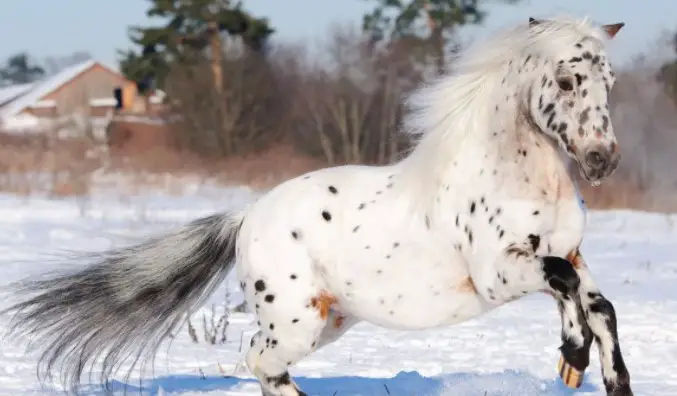
The Appaloosa is easy-going about feed and can live on one hay. These horses are fast and not tall, with extremely strong hooves and resistance to horse colic. They have soft gaits.
Key Features of the Breed
- Coat color: mottled
- Height at the withers: 1.42-1.52 m.
- Exterior: The horses of small stature with a well-proportioned head, perfectly molded neck, neat short ears, strong short back, powerful croup, and strong legs with very hard hooves.
- Usage: for riding or as a family horse. Equestrian sports: horse racing, dressage, showjumping, rodeo, etc.
- Features: mottled coat color, white sclera, spotted skin, striped hooves.
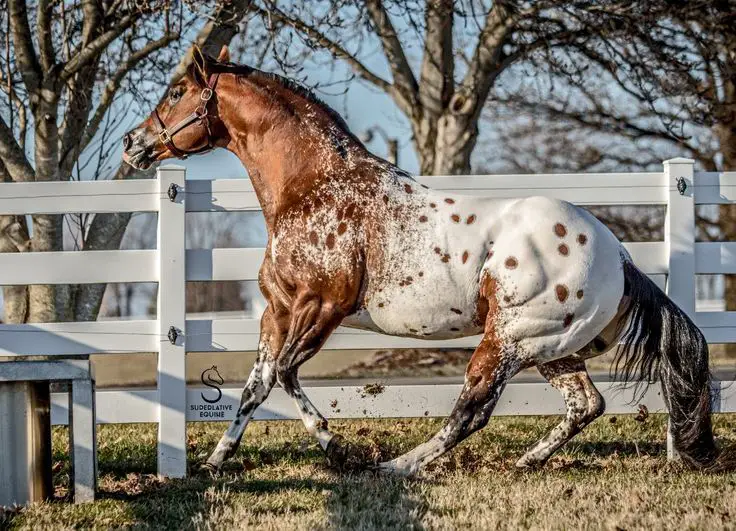
External Features
The Appaloosa’s highlight is the unusual combinations of colors and shades in its coat. There are some terms used to describe the coat colors: blanket, spots, varnish roan, roan blanket, roan blanket with spots, solid. There are also sub-coat colors but they vary much more widely and it is almost impossible to assign them to a particular category.
The spotted skin is one of the key external features of the Appaloosas. The skin of this breed can be either flesh-colored, unpigmented, or pigmented, with inclusions of dark areas.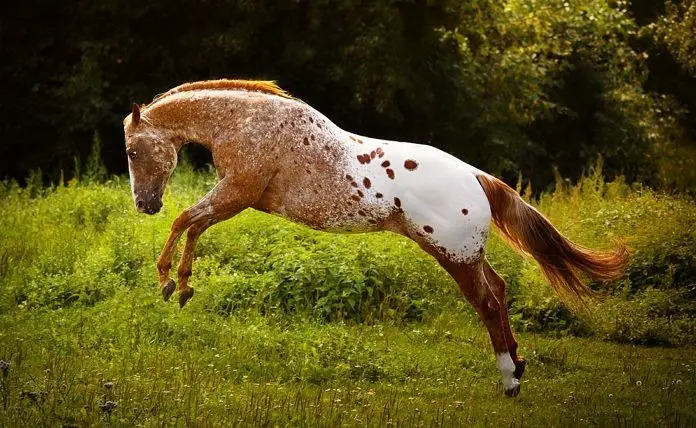
The white sclera is another characteristic feature of the breed. The sclera is the white area around the eye that covers the eyeball. All breeds have sclera but the Appaloosa has it more pronounced and highly visible. In addition to the white sclera, many respresentatives of this breed are also characterized by large white spots on the face.
Finally, vertical dark or white spots on the hooves. This feature is not specific to the Appaloosa only because such stripes can be an extension of white marks on the leg or trauma signs that other breeds can have. But still, you can find this feature in the Appaloosas.
Character and Temperament
The Appaloosa was specifically bred to work with humans. Very smart and shrewd, often brave, balanced. The horses learn different tricks quickly and quite often become loyal friends for one human partner choosing him on their own.
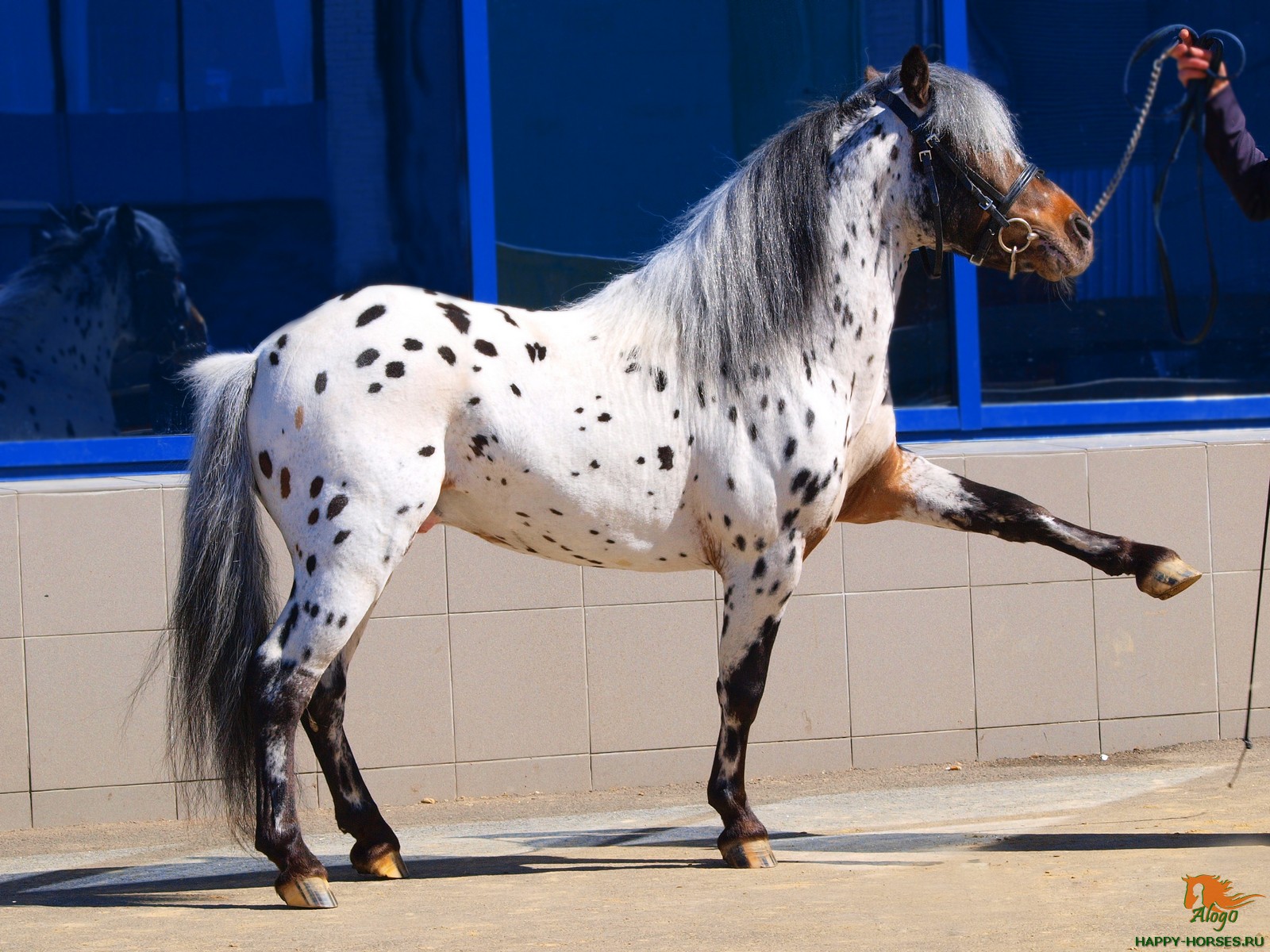
Breed History
The first domestic horses appeared in America in the 16th century. They were brought by the Spaniards after the discovery of America by Christopher Columbus. The horses found a place in the life of local Indians, their numbers increased, and most of the population of the Northwestern US began to ride them by the beginning of the eighteenth century.
The creation of the Appaloosa breed is a credit to the Nez Perce, the northwestern Indian tribe. The Nez Perce were the most experienced horse breeders in Oregon, Washington, and Idaho. Their riding horses, most of which were mottled horses, were highly prized among other tribes. The Nez Perce were the first Native American tribe to purposefully enshrine typical features in horse breeding. They selected the smartest and fast horses and sold the less appropriate. The goal of the Nez Perce was to breed the most reliable, strong, and fast horse. Unfortunately, the invasion of the white settlers radically changed the Nez Perce’s life and put an end to their horse breeding successes.
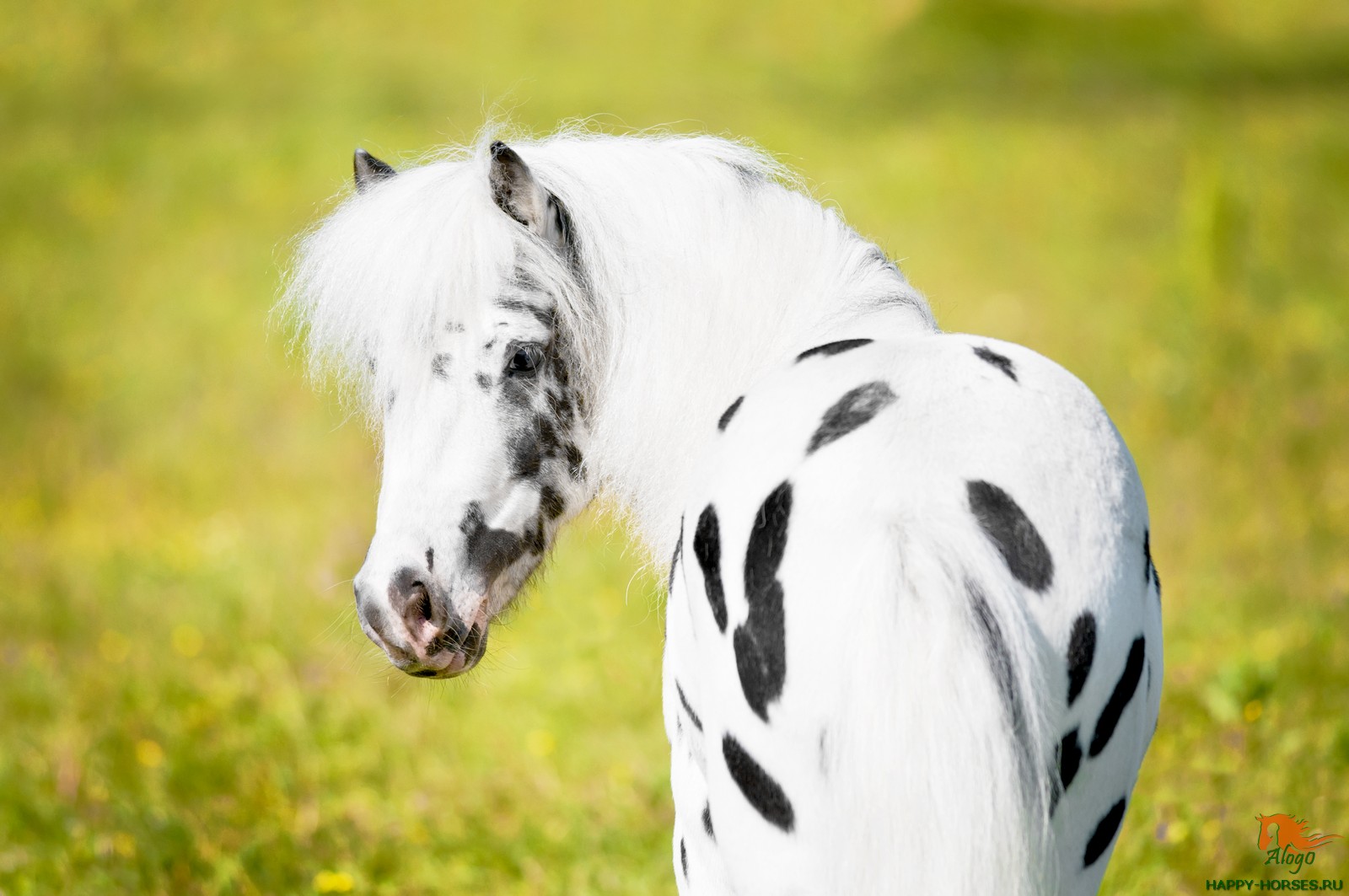
The breed was named “Appaloosa” after the Palouse River that flows through northern Idaho and eastern Washington, or after the Palouse tribe who lived on the banks of that river. When the pale-faced settlers came to these territories, they called the mottled horses “Palouse horses,” which, when not clearly pronounced, sounded like “Appalousey”. The name “Appaloosa” was officially approved in 1938.
In the late 19th century, during the war, the Appaloosa horses helped the Nez Perce tribe elude the U.S. cavalry and avoid battles for months. In 1877, for example, the Indians fled for more than 1,300 miles. Eventually, the Nez Perce were defeated. It took place in the state of Montana. The army confiscated most of the Indians’ horses, including the Appaloosas. The horses that survived were scattered among the settlers. The great characteristics of the breed were greatly diminished or lost altogether due to chaotic interbreeding.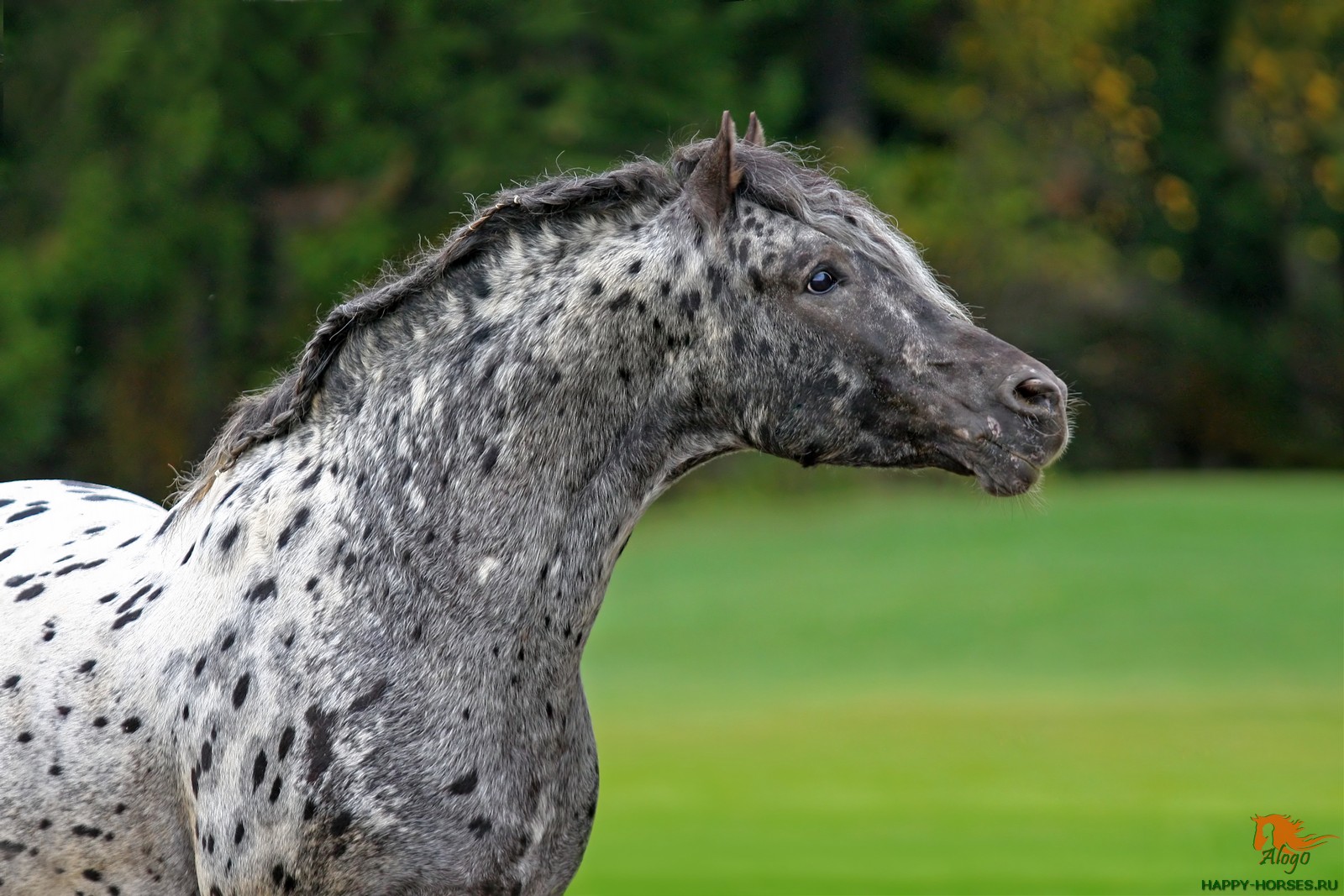
Claude Thompson, a farmer from Moro, Oregon, recognizing the importance of preserving the breed, created the Appaloosa Horse Club in 1938 to support and restore the breed’s valuable qualities.
The Appaloosa Museum & Heritage Center is currently located in Idaho. To date, more than 500.000 of the Appaloosa representatives have been registered, with about 10.000 more being added each year. The Appaloosa Journal, the official publication of the Appaloosa Horse Club, is published each month and has won numerous awards.
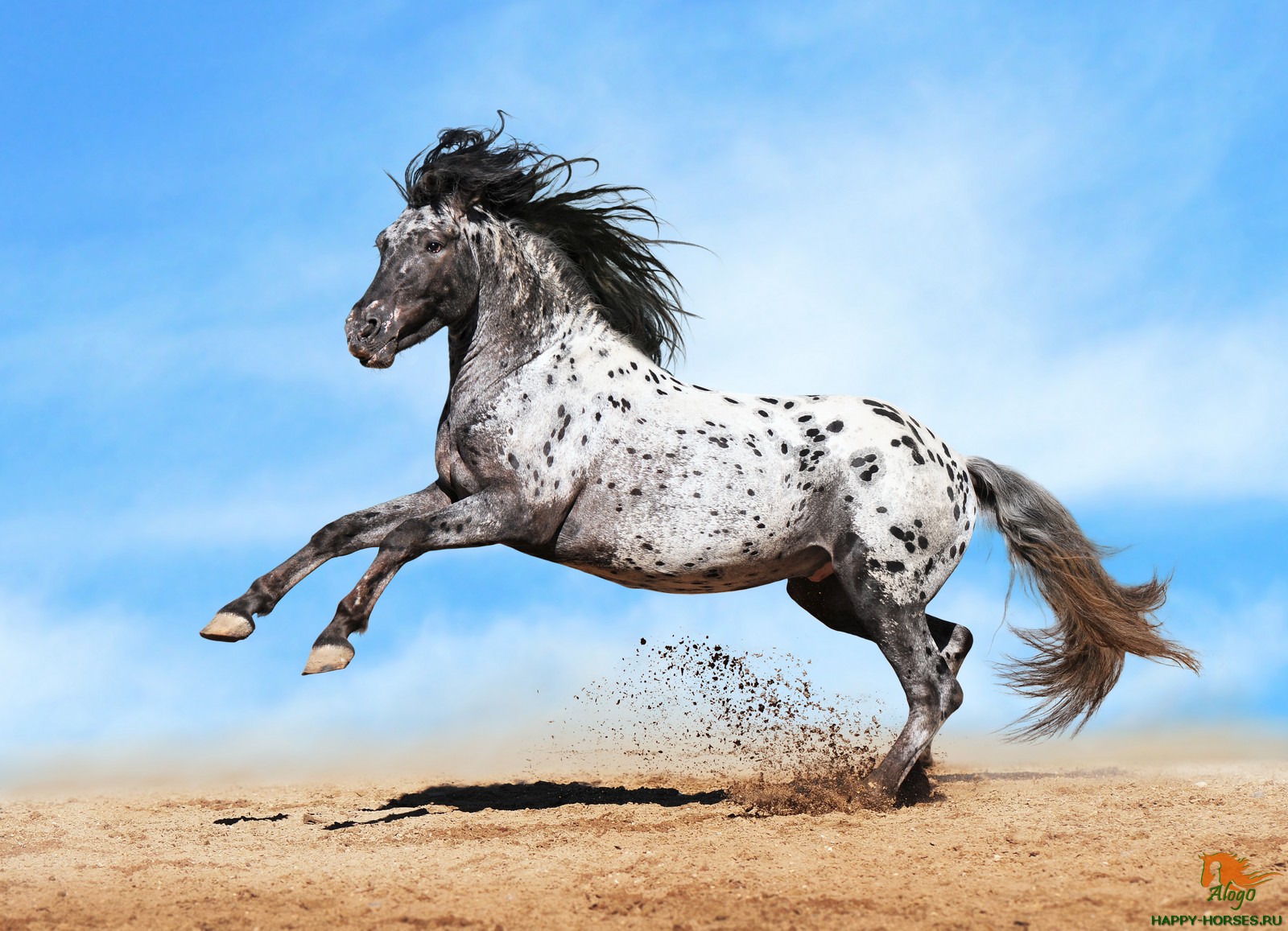
Famous Breed Representatives
Joker B is a descendant of the stallion Red Dog and an unregistered mare. He was born in 1941. He had a white spotted body. He showed high achievements in track and dressage. Joker B won the First Sire Award №1 of the Texas ArNS in 1965. That same year, he was sold for $26.500 at age of 24. Joker B passed away a year later, in 1966.
Mighty Bright is a result of the careful planning by the famous breeder Lein Hudson. Having found the sire stallion Bright Eyes Brother, Hudson spent a year and a half searching for the perfect mare. Mighty Bright was born in 1960 but ended his career when he was one year old and broke his leg. However, Mighty Bright lived up to expectations as a sire. He produced 189 outstanding foals. He died quite early, at the age of 14.
Absarokee Sunset was the result of crossbreeding between the Appaloosa stallion Flamingo and the mare Powdered Sugar. He had a bay color and a large roan. Absarokee Sunset won many competitions. He became the first representative of the breed to earn a Bronze Plaque from the ApHC. Absarokee Sunset was an excellent sire. He gave birth to 449 foals, including 64 winners, 1 all-around champion, 10 Superior Perfomance. He died at the age of 18 in 1974.
Prince Plaudit was born in 1963. He won many awards and was repeatedly awarded the title of “Recognized Sire” at national shows. Prince Plaudit was sold for $300.000 in 1974. He died in 1988.

